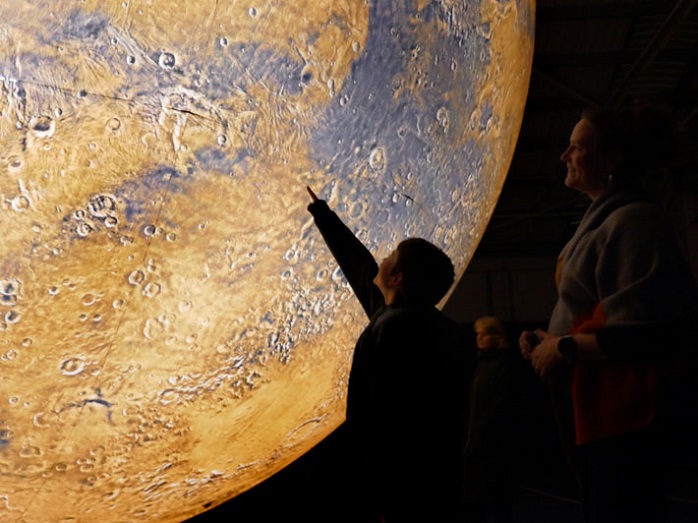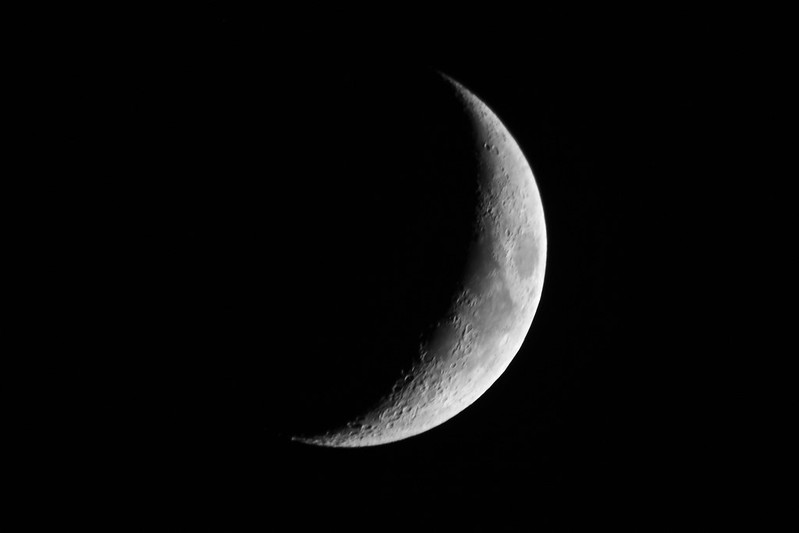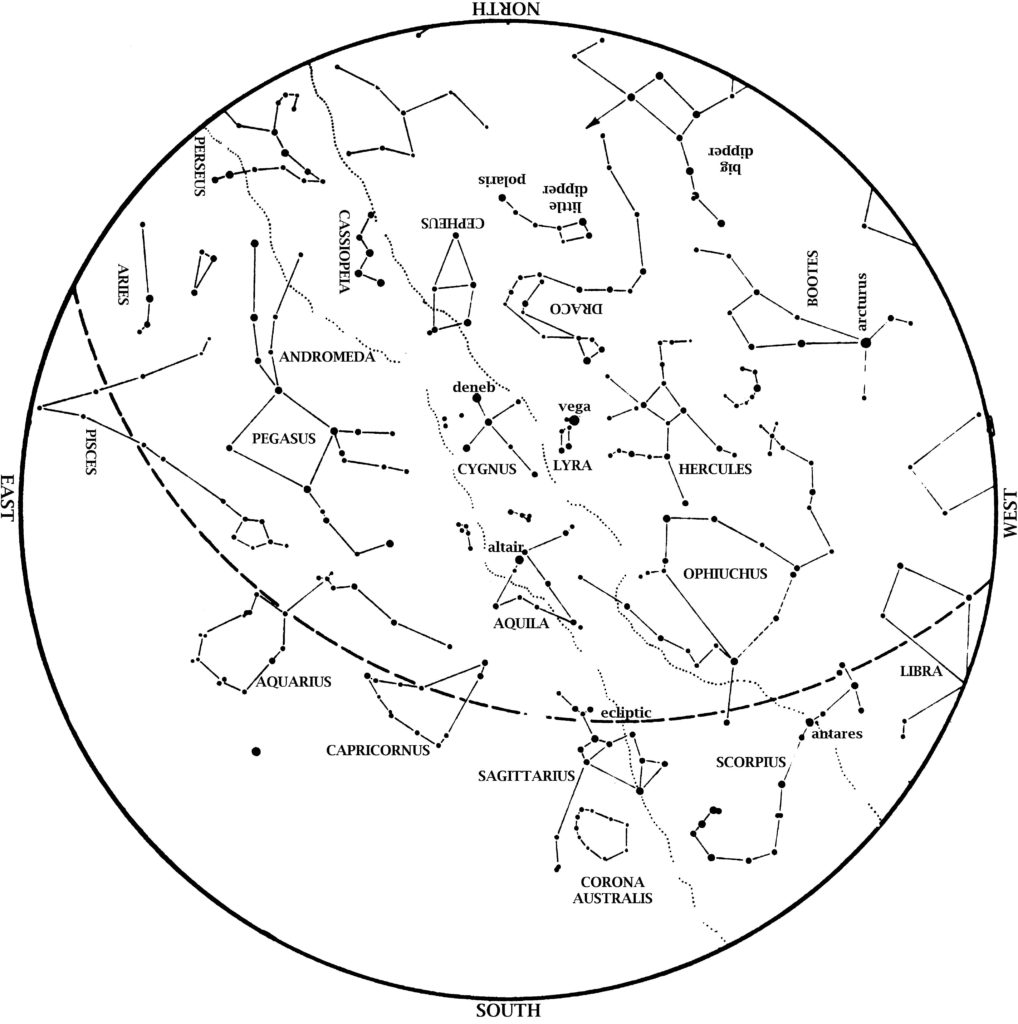Jupiter and Saturn are in the south at dusk this month. Look south in the early evening for the two planets which will be about 6 degrees apart. Jupiter outshines every star up at night.
Mars is higher and brighter in the morning sky each day this month. Look high in the southwest at dawn. Mars now outshines all the stars visible at night from Houston this time of year. By month’s end, it will outshine even Jupiter!

Venus is now visible in the east at dawn. It remains a ‘morning star’ for the rest of 2020.
The Big Dipper is above and to the left of the North Star, with its handle pointing up. From that handle, you can ‘arc to Arcturus’, which is the brightest star visible on August evenings.
The Summer Triangle is high overhead at dusk. This consists of Deneb, Vega, and Altair, the brightest stars in Cygnus, Lyra, and Aquila respectively. Scorpius, the Scorpion, is in the southwest, with the ‘teapot’ of Sagittarius to his left. Jupiter shines above Scorpius, with Saturn to the upper left of the ‘teapot’. When you face between these two constellations, you face the direction of the galactic center, which all stars in the Milky Way orbit. From the Big Dipper’s handle, ‘arc to Arcturus’ and ‘speed on to Spica’ in the southwest. The Great Square of Pegasus rises in the east, heralding the coming autumn.

Moon Phases in September 2020:
Full Sept. 2, 12:22 a.m.
Last Quarter Sept. 10, 4:26 a.m.
New Sept. 17, 6:00 a.m.
1st Quarter Sept. 23, 8:55 p.m.
At 8:31 am on Tuesday, September 22, 2020, the Sun is directly overhead as seen from the equator, shifting southwards. This is therefore the autumnal (fall) equinox for us in the Northern Hemisphere. You have probably already noticed that the Sun set earlier and earlier each night during August. After the equinox, night becomes longer than day for us. Below the equator, on the other hand, days have been lengthening, and day becomes longer than night as of this equinox. For folks down there, this is the vernal (spring) equinox.
Many consider this the ‘official’ start of fall, although the actual arrival of fall weather varies from year to year. Keep in mind that air and water take some time to cool off, so even with the Sun lower in the sky, warm or even hot weather is common for us in September. This is why the fall equinox is much warmer than the spring equinox in March, when the Sun is at a similar height in the sky.

The Summer Triangle is overhead. This consists of the brightest stars in Cygnus, Lyra, and Aquila. Scorpius, the Scorpion, is in the southwest, with the ‘teapot’ of Sagittarius to his left. Jupiter and Saturn are to the upper left of Sagittarius. From the Big Dipper’s handle, ‘arc to Arcturus’ in the west. Mars rises in late evening, outshining even Jupiter. The Great Square of Pegasus is high in the east, heralding autumn.
Our George Observatory remains closed. We are preparing ways to operate safely in light of COVID-19, and hope to open soon! In the meantime, take a closer look at Mars at our HMNS Hermann Park location with our 23-foot installation Mars by Luke Jerram, included with permanent exhibit hall admission. We’re also hosting three stargazing events with our VP of Astronomy Dr. Carolyn Sumners as a part of our membership appreciation month.

